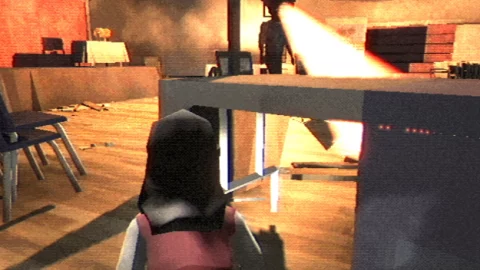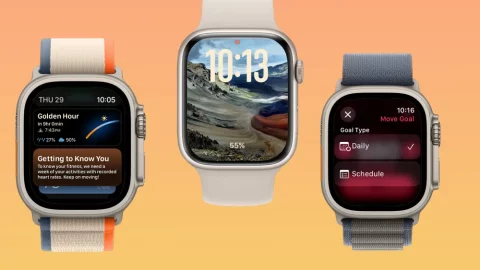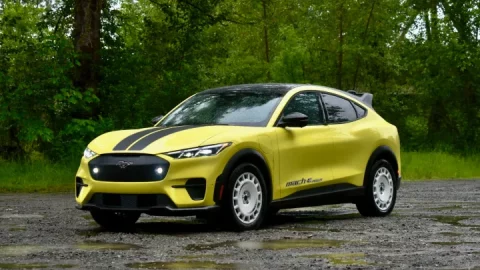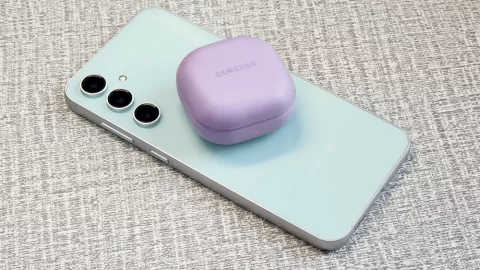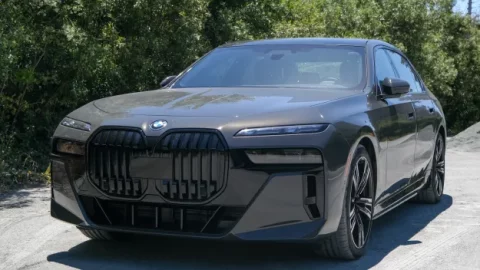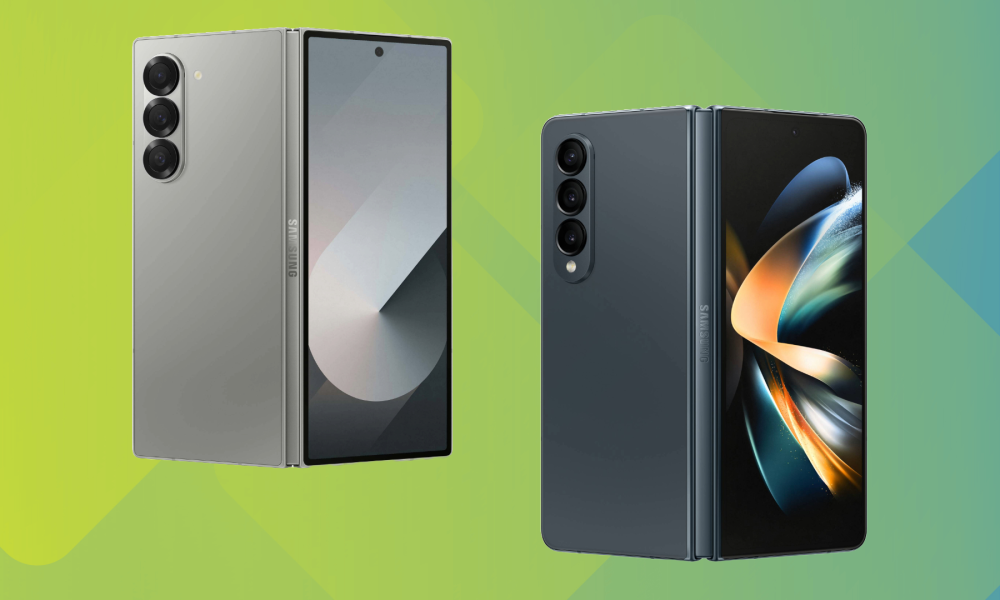
Galaxy Z Fold 6 (left) and Galaxy Z Fold 4 | Digital Trends
With the Samsung Galaxy Z Fold 6, Samsung is attempting to win over foldable phone enthusiasts once more. The main selling points include a new design housed in a slimmer chassis, a faster chipset, a slightly more robust construction, a redesigned hinge mechanism, and a shallower crease on the inner foldable panel.
Undoubtedly, it does not sound like a very exciting year-over-year upgrade compared to the Galaxy Z Fold 5, and it is definitely not a standout device compared to rivals like the OnePlus Open and the Vivo X Fold 3 Pro. All of that comes at a $100 price increase, though.
However, if you have been enjoying your Galaxy Z Fold 4 and are not sure whether to upgrade or hold off, there are a few things to consider. In this comparison, we will concentrate on the main distinctions that should be important to consumers.
Samsung Galaxy Z Fold 6 vs. Galaxy Z Fold 4: specs

Galaxy Z Fold 6 vs. Galaxy Z Fold 4: design and build
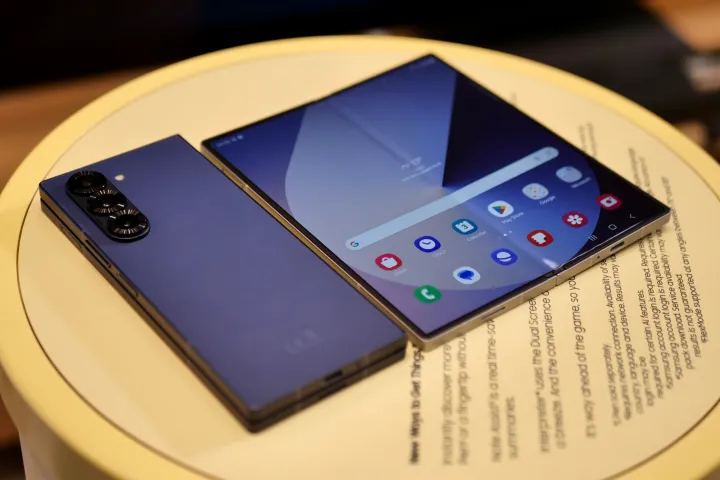
With a reinforced folding edge and increased resilience to shock absorption along the frame, Samsung has developed a “dual rail hinge structure” for the Galaxy Z Fold 6. For the cover display and the back shell, the company also used an improved version of Armor Aluminum and second-generation Corning Gorilla Glass.
Although Samsung will not disclose how much extra protection these materials provide, they are unquestionably more durable. Additionally, there is less of a crease on the inner flexible screen. The primary distinction between this phone and the Galaxy Z Fold 4 is that, when closed, there is no space between the two parts.
That is a big relief because liquid and dust particles were able to enter through the exposed gap. Considering the past malfunctions that numerous customers have reported, the seamless design of the Galaxy Z Fold 6 ought to be a major selling feature. Samsung’s most recent phone is now IP48 protected, and it also has dust protection for the first time.
The review by Digital Trends emphasized enhancements like improved weight distribution and increased comfort in handling. The Galaxy Z Fold 4 has no verified dust resistance and only an IPX8 degree of water resistance. Improved shock distribution to external impact may sound like standard marketing speak, but it does not make sense when considering a foldable device.
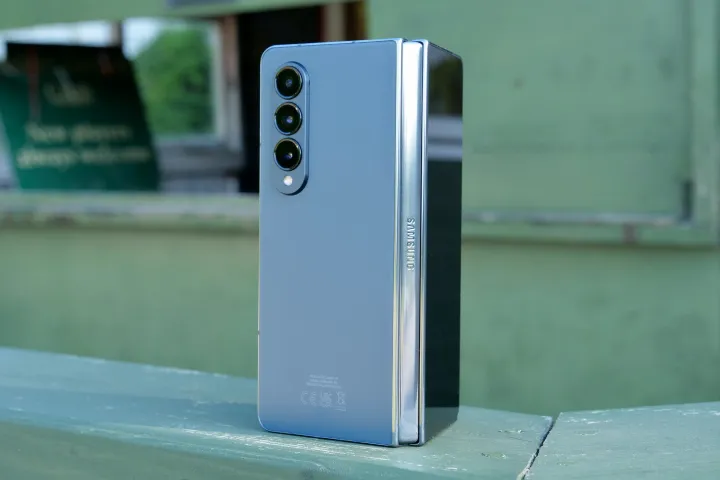
We recently looked into complaints about foldable hardware at official Samsung centers and found cases where the hinge assembly was misaligned due to bumps and drops. The Samsung foldable consequently refused to open completely and experienced glue leaks. It appears that the Galaxy Z Fold 6 has taken a much-needed step to address those issues.
Samsung claims that its 2024 lineup of foldable phones are the thinnest and lightest it has ever produced, making them “the most durable Galaxy Z series yet.” In summary, the Galaxy Z Fold 6 offers real advantages over the Galaxy Z Fold 4 if build quality is your main concern.
Galaxy Z Fold 6 vs. Galaxy Z Fold 4: internals
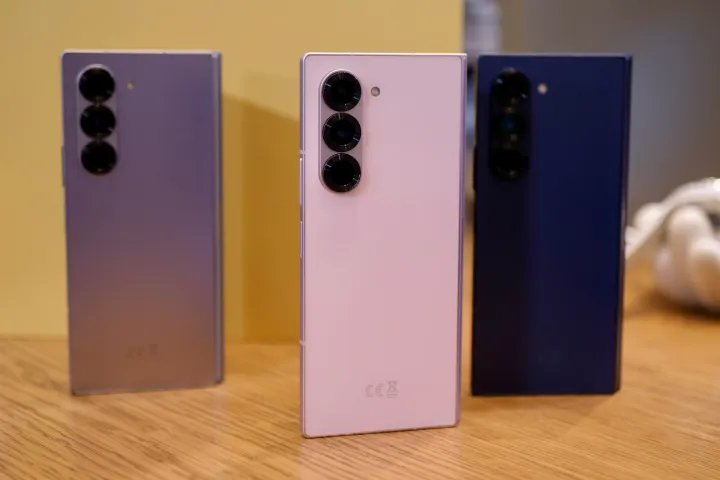
The Galaxy Z Fold 4 is powered by the Snapdragon 8+ Gen 1 silicon, while Samsung has equipped the Galaxy Z Fold 6 with Qualcomm’s Snapdragon 8 Gen 3 chip. Performance is undoubtedly improved, but since both phones use the 4nm process, the improvement is not as significant as one might anticipate given the two-year gap between them.
12GB of RAM and memory options ranging from 256GB to 1TB are included with both phones. Both the battery’s 4,400 mAh capacity and the charging parameters—which have a maximum output of 25 watts for wired charging—remain unchanged.
However, from the standpoint of generation-over-generation improvement, the battery life situation seems less than ideal. In our tests, the phone’s battery lasted for one day, but actual usage will undoubtedly affect this. Find a charging port before the end of the day if you are pushing DeX with multi-screen collaboration or engaging in multimedia-intensive workflows.
The Galaxy Z Fold 6 review from Digital Trends states, “At the time of writing, I have not been that impressed with its performance, as quite often, I have looked down at it and wondered where all the battery life had gone.”
The multi-eSIM format is supported by the Galaxy Z Fold 6, though it varies based on the market where you purchase it. In the area of wireless connectivity, there is one more small adjustment. The Galaxy Z Fold 4 adheres to the Bluetooth v5.2 standard, whereas the most recent model from Samsung uses Bluetooth v5.3.
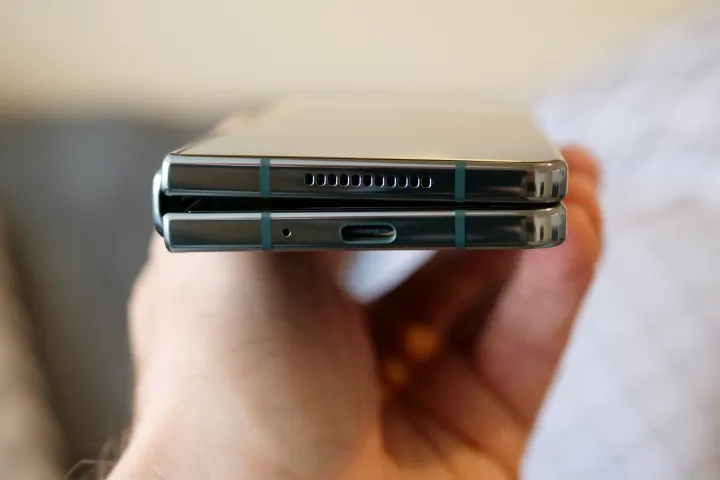
There are two significant changes, but the display’s resolution mostly stays the same. In comparison to the peculiarly tall 6.1-inch front panel on the Galaxy Z Fold 4, the cover display on the Galaxy Z Fold 6 is larger at 6.3 inches and more “normal.”
The new phone will have consistent on-screen fluidity on both screens. The Galaxy Z Fold 6’s inner and cover OLED panels can adjust between 1Hz and 120Hz, adapting to the content displayed on screen. On the Galaxy Z Fold 4, the cover display’s refresh rate can only drop to as low as 48Hz, while the peak remains identical at 120Hz.
Galaxy Z Fold 6 vs. Galaxy Z Fold 4: cameras
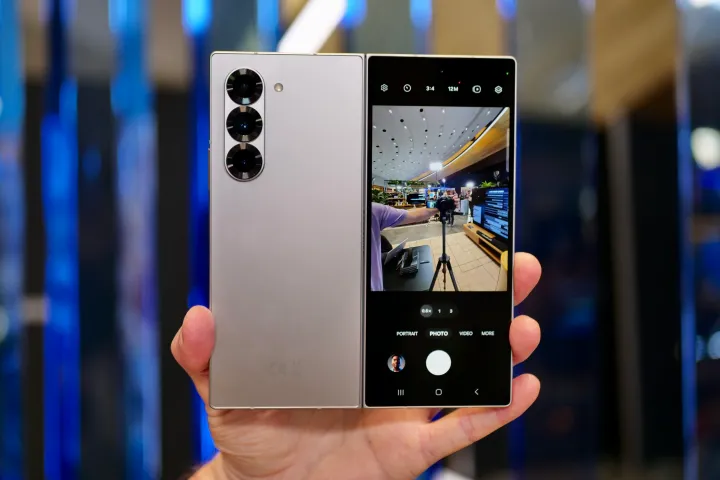
In terms of new camera hardware, well, it is hard to find. The 4-megapixel under-display camera’s field of view increases from 80 degrees on the Galaxy Z Fold 4 to 85 degrees on the Galaxy Z Fold 6, which is the only significant change, at least theoretically.
The remaining hardware is the same. A 50MP primary camera, a 12MP ultrawide sensor, and a 10MP telephoto lens with a 3x optical zoom range are included. The cover screen offers a centrally aligned 10MP selfie camera.
The feature set differs slightly in a few areas. “Optical quality zoom 2x” is a feature of the Galaxy Z Fold 6 that, according to Samsung, is made possible by an Adaptive Pixel sensor. The Galaxy Z Fold records 8K video at 30 frames per second (fps), whereas the Galaxy Z Fold 4 could only record at 24 fps.
A strange development has occurred in the slow-motion domain. The Galaxy Z Fold 6 is unable to capture 960 ultra-slo-mo at HD resolution, unlike the Galaxy Z Fold 4. Instead, it gets two additional options: 120 fps at FHD and 120 fps at UHD.
Now, let’s talk about the camera performance. While there have been improvements made to the camera, do not expect the same level of performance as the Galaxy S24 Ultra. As is typical of Samsung, the main sensor performs well, meaning that HDR output will be favored by a little higher saturation. However, not everything is as it seems.
According to Digital Trends’ review of the Galaxy Z Fold 6, “when you look at the Z Fold 6’s images critically, the wide-angle camera takes muddy, low-quality images, especially in sub-optimal lighting, and at any zoom level aside from 3x, the photos are disappointing, just like the 4MP under-display camera.” “Lens flare using the main camera is quite common.”
To put it briefly, the cameras are dependable but fall well short of being “amazing,” which is not what you would anticipate from a phone that costs almost two thousand dollars. This foldable is not quite the pocket camera powerhouse for people who are enthusiasts or professionals, but it will work perfectly for social media-savvy users.
Galaxy Z Fold 6 vs. Galaxy Z Fold 4: software
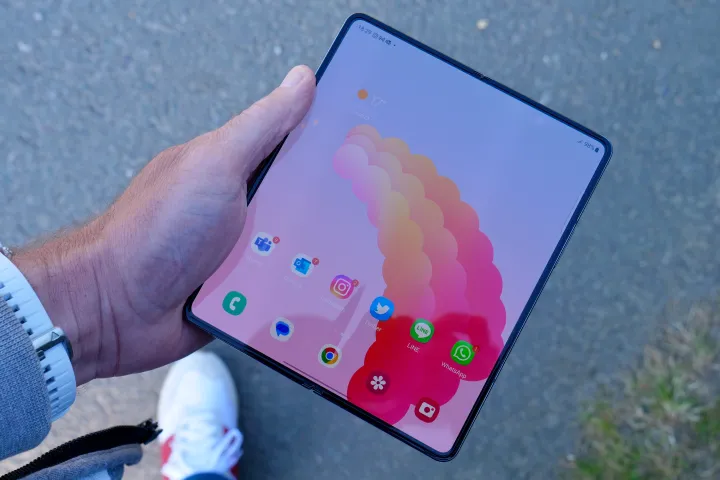
The Galaxy Z Fold 6 runs Android 14-based One UI 6.1.1 out of the box. One UI 6.1 for the Galaxy Z Fold 4 was recently made available through a software update. The UI will now seem familiar, but there are two important distinctions: the AI experience and the remaining years of updates.
Let’s start with the AI experience. At the Unpacked event, there was a lot of talk about AI. If there are not any hardware-level issues, both phones will have the same experience. The Galaxy Z Fold 4 is mentioned on Samsung’s dedicated Galaxy AI website, along with its capabilities for Circle to Search, Note Assist, Live Translate, and generative AI-powered photo editing, among other things.
We are not sure if the Galaxy Z Fold 4 is included in the list of foldables that will receive some of the more recent AI innovations that were unveiled for the Fold 6. Annika Bizon from Samsung stated at Unpacked, “We also plan to roll out the new Galaxy AI features we announced today to select Galaxy devices by the end of the year.”
The largest software update consists of a few AI features, some of which operate locally on the device and do not need an internet connection. Samsung sells the whole bundle as Galaxy AI. Consider Note Assist, which helps users with organization and summarization in addition to content creation.
However, Photo Assist can accomplish a lot more tricks, like eliminating objects from images, adding background color, changing angles, and more. Additionally, the AI stack can add a slow-motion effect to a regular video and transform rough sketches into photorealistic images. The Galaxy AI package also includes transcription, call translation, and interpreter mode.
Remember that not every Galaxy AI feature that debuted on the Galaxy Z Fold 6 will be available on the Galaxy Z Fold 4.
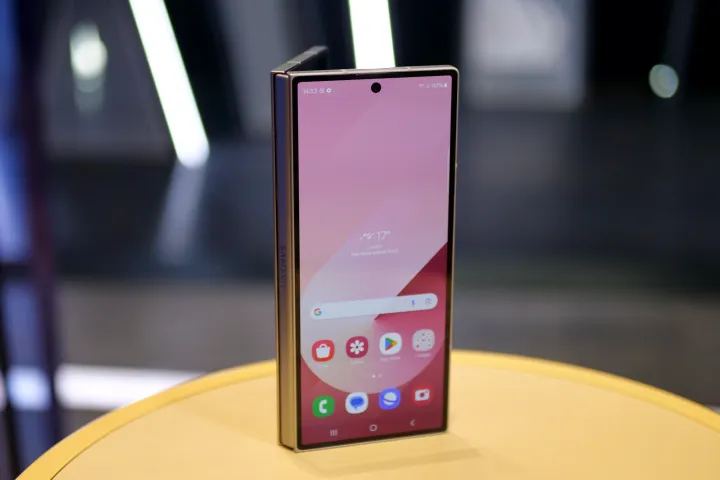
Next, let’s check the software longevity situation. For the Galaxy Z Fold 4, Samsung will provide five years of security updates in addition to four years of OS updates.
The manufacturer has guaranteed seven generations of yearly Android updates and security patches for the Galaxy Z Fold 6. That is among the best guarantees available, and this software update commitment is a significant step in the right direction if you plan to keep a foldable phone for a long time. It is crucial to remember that the Z Fold 4 has already received two years’ worth of promised updates.
Galaxy Z Fold 6 vs. Galaxy Z Fold 4: verdict
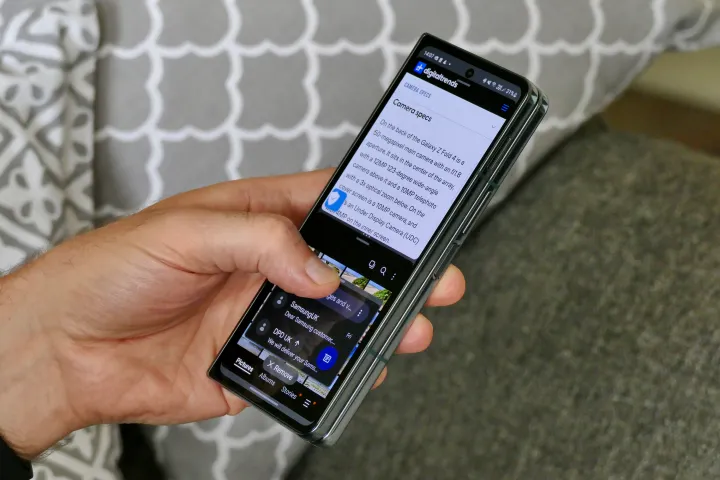
Whether to upgrade to the Galaxy Z Fold 6 is a fairly simple decision. Go to Samsung’s website to get the best trade-in offer if your Galaxy Z Fold 4 is giving you hardware hell and needs urgent, costly repairs, or if you just want a foldable that will fit in your pocket for the next five years at the most.
Apart from a stronger construction and a more elegant design, the Galaxy Z Fold 6 does not offer much else that would make you feel FOMO-ish. Consider whether you will actually use the AI features on a regular basis and in meaningful ways before deciding how jazzy and fancy they look.
Apart from that, it is just a series of gimmicks that should not convince someone to spend $1,900, or more, on the Galaxy Z Fold 6. Personally, even though the silver Galaxy Z Fold 6 looks more alluring than a sweet Vietnamese coffee, I have a Galaxy Fold 4 in my drawer and do not see much reason to upgrade.
“You are going to pay at least $1,900 for the Z Fold 6, you are correct to expect more than 12GB of RAM and 256GB of storage space, faster wired charging, a better camera, and even a S Pen stylus to be thrown in,” says Digital Trends in a review that aptly summarizes the value dilemma. Unfortunately, if you want the Z Fold 6 to be the flagship-to-end-all-flagships, it’s just not that.”
by DigitalTrends
